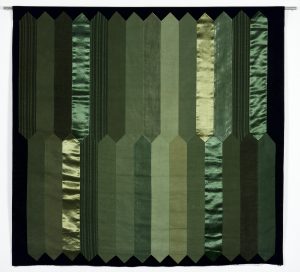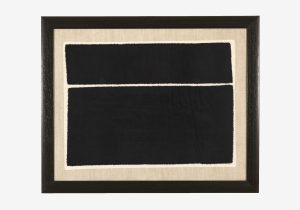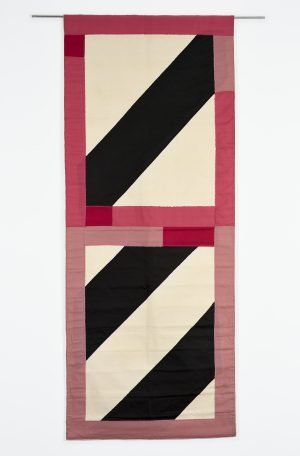
Margit SZILVITZKY
Black Qualities
- Year(s)
- 1979
- Technique
- painted canvas and silk
- Size
- 120x124 cm
Artist's introduction
Margit Szilvitzky is a pioneer among the Hungarian artists who renewed the medium of textile as a form of Neo-Avant-Garde art. After finishing her studies at the College of Design, Textile Department in Budapest in 1954 she became a well-known textile designer. From the second part of the 1960s, however, her interest in creating autonomous artworks led her more and more in the direction of fine arts. Her debut as an artist goes back to the late 1960s when she presented works inspired by folk art motives and embroidery. The beginning of the 1970s was an active period for the artists working in her field. Herself, with Gábor Attalai, Zsuzsa Szenes, Aranka Hübner and others generated a new approach to textile-based installations and works. In Szilvitzky's case, the redefining of folding the material gave new geometry-based possibilities to refer to space, and to extend the mode of presentation to the third dimension, expanding from smaller to a larger scale. She came upon the square form as a starting point referencing the history of the avant-garde, which she could variate with the overlapping folding technique. She experimented with the combination of different kinds of fabrics with disparate surface effects, resulting in montage-like works with differing shades and impacts. Her work extended the possibilities of abstraction toward textile-based object-like artworks. She participated in the workshop of Velem, Hungary from its onset, where the experimenting textile artists worked between 1975-1983, and she also took part in its presentation event, the so-called Wall and Space Textile Biennials at Szombathely, Hungary. These important years changed the context of the medium locally, presented textile as a territory for discussions to unfold and relevant questions to be asked expanding the possibilities of the contemporary arts, and putting the participating artists’ practices among the experimental initiatives. Szilvitzky's orientation turned toward painting and collage at the beginning of the 1980s, after experimenting with adding colour by painting on used canvases. Her later work stayed consistent in its approach becoming more and more presented in two-dimensional, framed pieces. Her body of work has been fully explored in recent years, her textiles are in the collection of the Hungarian National Gallery and other national and international collections. Zsolt Petrányi
More artworks in the artist's collection »



